The complete guide to raising a kitten: Part 3 – Top 5 most common behavioural problems (and what to do about them)
September 02, 2019We’re hoping that, by now, you and your new kitten (plus any other resident animals) are all settled and living harmoniously. Now that you’ve covered the basics, it’s time for the next step – dealing with problems you may encounter along the way.
In part 3 of our series, we’re here to lay out the most common behavioural problems in cats and kittens and exactly how to tackle them.
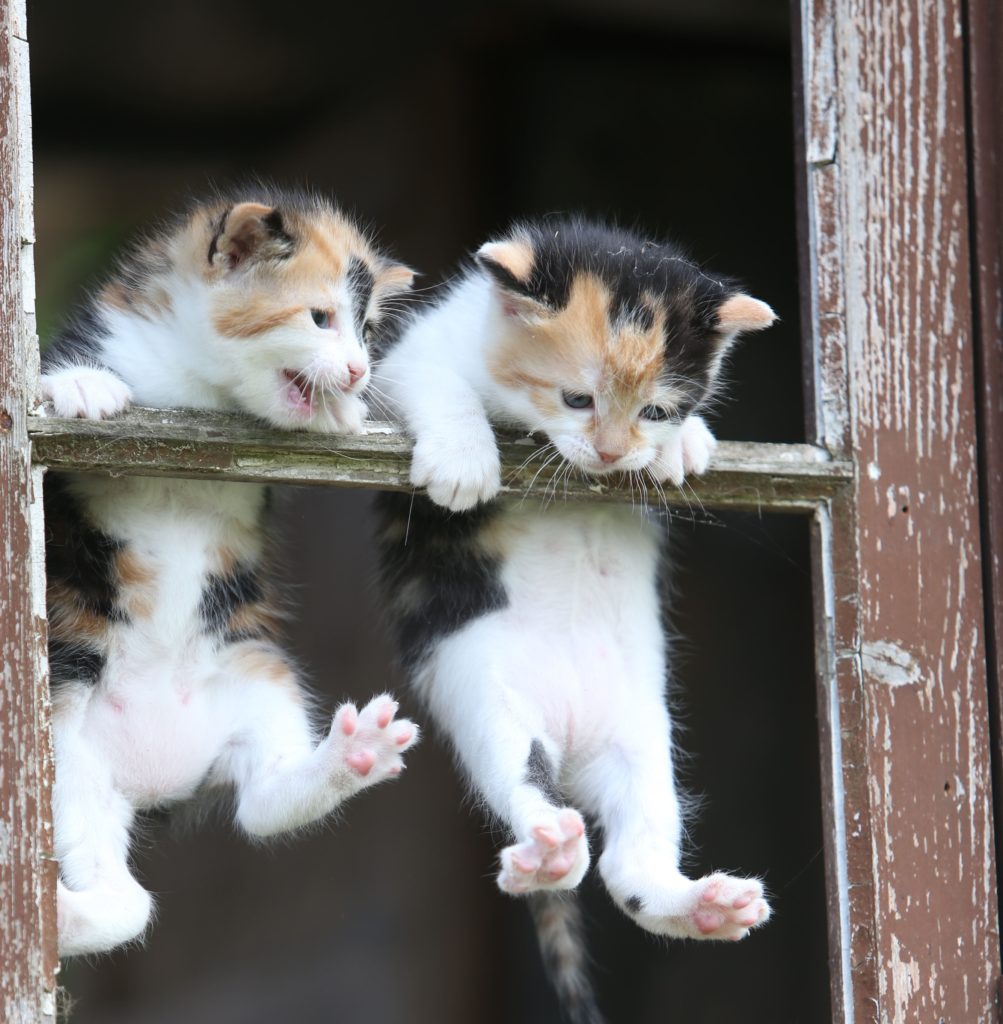
1. Play biting and scratching
We all know that cats, and especially kittens, love playing. But it’s all too common for kittens to get carried away during play time, leaving behind bites or scratches on their playmates.
This type of behaviour actually happens to be the most common issue in kittens, so it’s important to nip it in the bud early and not let it form a habit.
If your fur-baby gets over the top when playing:
Do
- Move away from the situation completely and refuse to react or give your kitten any attention.
- The less attention they get, the less motivation they’ll have to repeat the behaviour.
- Redirect the behaviour.
- Once you have ignored an attack and moved away, give an interesting toy (usually a string toy or a ball to throw) to your kitten instead and reward good behaviour if they play well with it.
- It’s a good idea to have toys nearby whenever you suspect they might get carried away so that you have things to grab at all times.
- Reinforce calm playing behaviour by rewarding them with a food treat.
Do not
- Reward your kitten for biting and clawing by continuing the play, however tempting it may be.
- If they start to bite and scratch – let them know that it’s not okay by stopping playtime.
- React with high-pitched vocalizations, as this may simply reinforce the behaviour.
- For some kittens, any reaction by their owner, even negative, is better than no attention at all.
- Punish your kitten physically.
- This may lead to them becoming afraid of you and cause a host of more behavioural problems in the long run.
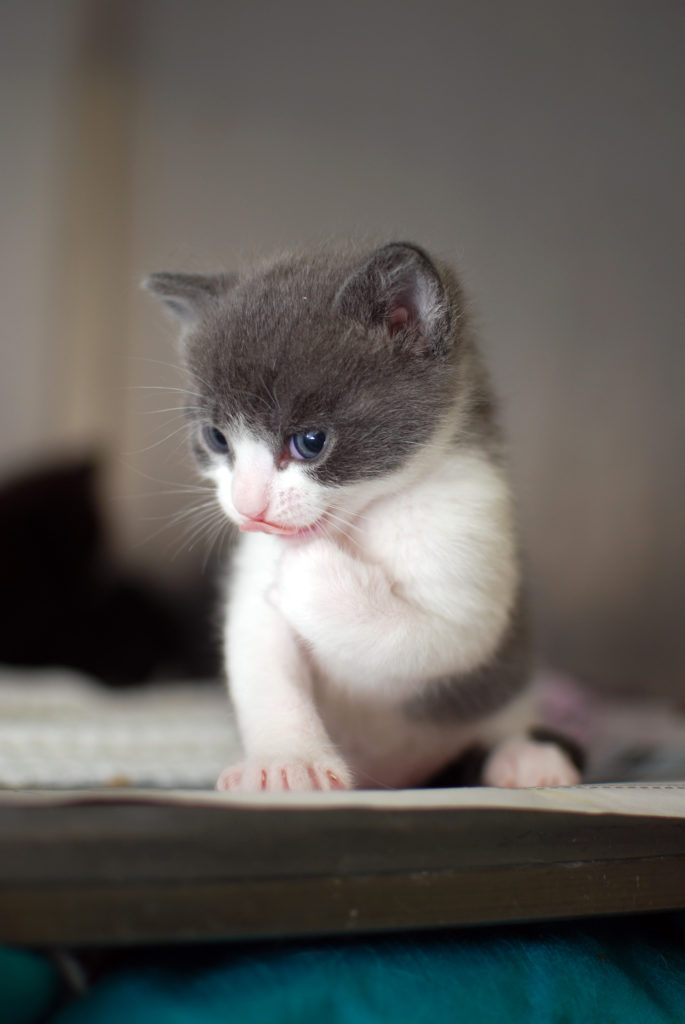
2. Furniture scratching
If your kitten scratches the furniture or carpet, rest assured that this is natural behaviour – and it’s easy to manage!
For cats, scratching objects or trees helps them to keep their claws healthy while also acting as an emotional outlet.
Despite what you may think, cats don’t tend to scratch furniture out of spite – they just don’t realise that the couch isn’t an appropriate scratching area.
Having trouble with your puss scratching furniture? These are our ideas to stop it once and for all.
Provide plenty of exercise and stimulation
First of all, make sure that you’re having sufficient playtime with kitty and allowing them enough visits outside (especially if they’re an indoors cat).
The more stimulated they are overall, the less likely they’ll be to engage in unwanted behaviour.
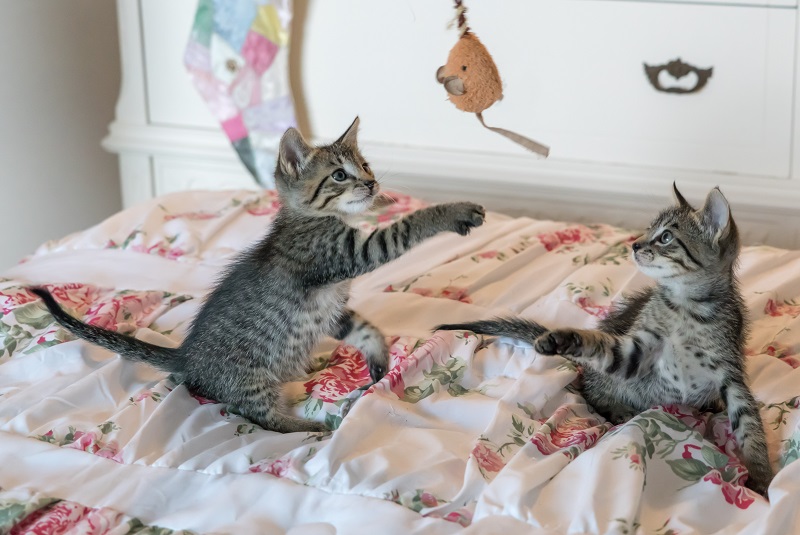
Provide a scratching post
Coming in all shapes, sizes and textures, scratching posts are a must-have for cats, but they’ll only be useful if your cat is happy with the one you’ve chosen. Remember how fussy cats can get about litter boxes? We’re afraid it’s the same with scratching posts.
If Fusspot seems disinterested in their scratching post, you may need to try a couple of different styles before finding one they like. Some cats like horizontal posts, while others prefer vertical. Just make sure the post is sturdy and tall enough to allow your cat to stretch completely.
If you’ve invested in a scratching post to curb furniture destruction, place the post in front of the area of couch or carpet your kitty has been targeting so that they’ll redirect their scratching.
For owners of multiple cats – it’s a good idea to have one post per cat, as your resident cat may have already taken ownership of their post and not want their new fur-sibling in on it.
If you’re looking for a super cheap idea, cardboard scratchers are an excellent option. These can be found at most department stores, and many cats love their softness.
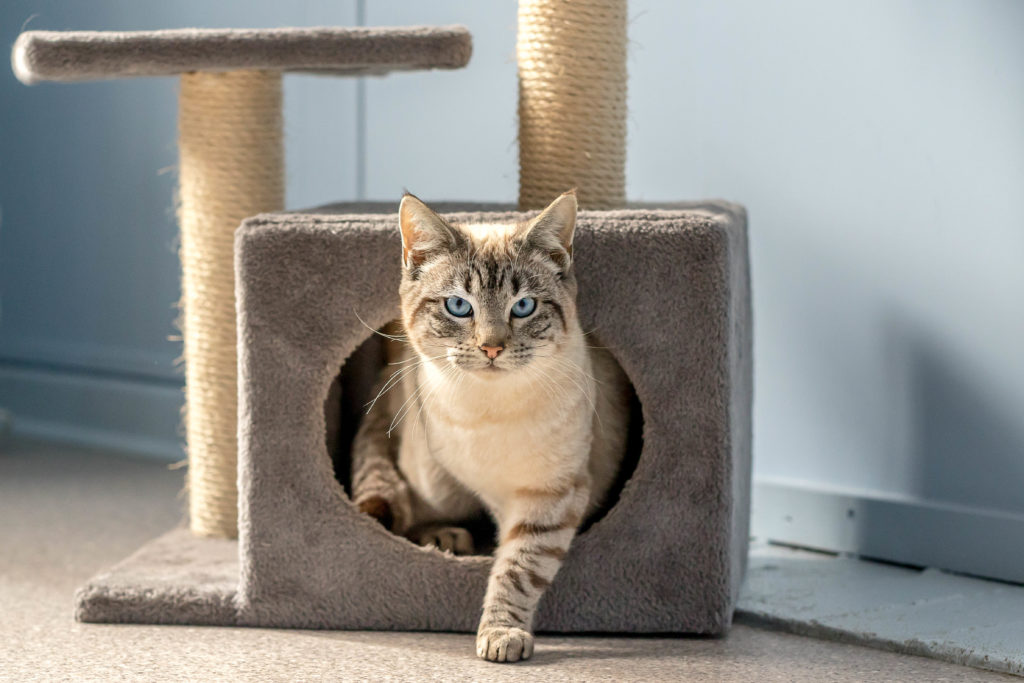
Redirect behaviour
Have you placed your new scratching post in front of scratched-up furniture, but your cat would still rather scratch the couch? If you see your furry one scratching where you don’t want them to, gently redirect them to the scratching post with a toy or stimulated scratching movements.
Additionally, you could reward scratching of the post with a food treat. Make sure it’s in an area separate to the post, though (you don’t want to get accidentally scratched!).
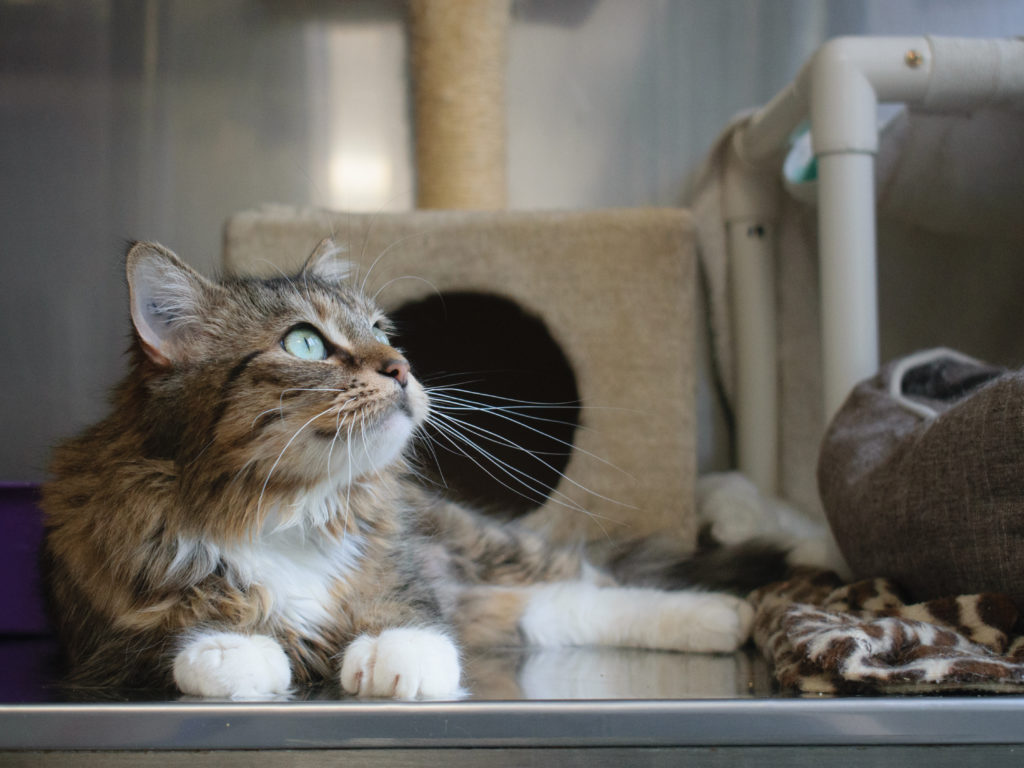
In the meantime
We recommend protecting furniture with thick covers while training your kitty out of scratching it.
When you’re not home, it’s also a good idea to keep your kitten out of rooms with any particularly valuable furniture that you don’t want scratched. If you opt for this idea, try to ensure that your kitty is in a room with windows so that they can keep themselves stimulated by looking outside.
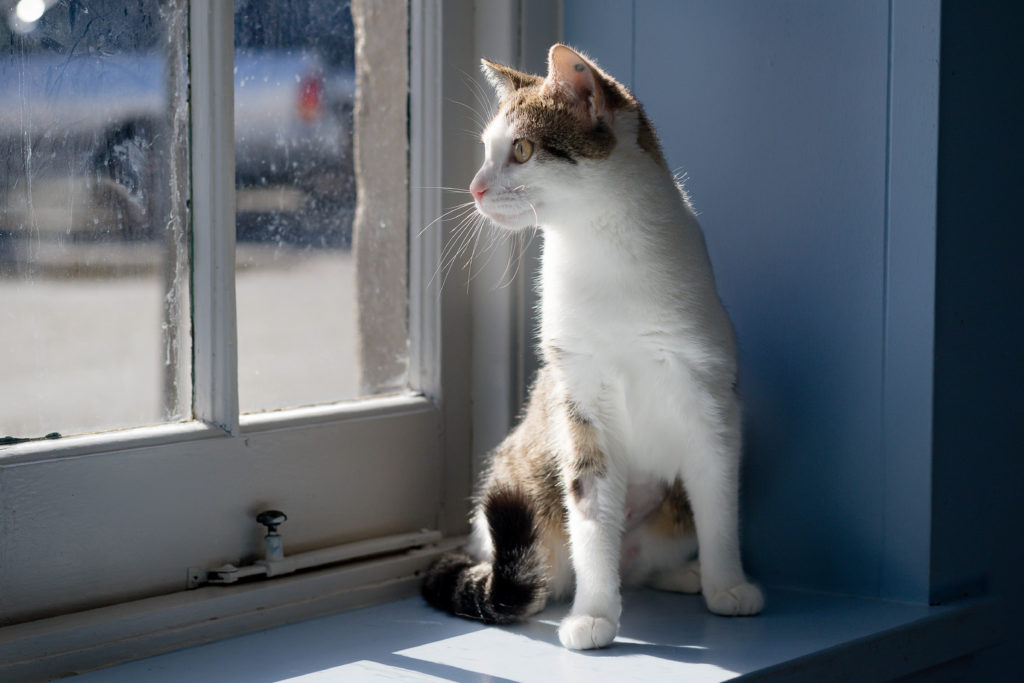
3. Inappropriate use of litter of litter tray
Another common problem with kittens, inappropriate use of the litter tray can be medical or behavioural.
If kitty starts to urinate or defecate in unwanted places once they’ve already been litter trained, we highly recommend consulting your vet to rule out any medical causes.
If everything’s all good in the medical department, you might like to consider what else could be causing these habits.
Stress, anxiety or frustration
It’s normal for cats to “mark” their environment if they feel stressed or are trying to mark their territory in response to the introduction of a new human or animal.
If this is the case, try the following:
- Spray odour neutralisers on the area where your cat has urinated unwantedly to remove the urine smell, which may help to decrease their interest in continuing to urinate on that spot. Please ensure any odour neutralizers are safe for use around cats!
- If your cat has become accustomed to urinating in a particular area, place a litter tray there. If they use the tray in that location, leave it there for at least one week, and then slowly move it to a new location little-by-little each day.
- You could also change the function of that area by turning it into a feeding, playing, sleeping or scratching area which may deter kitty from urinating there.
- Your vet may also advise feline pheromone sprays or diffusers to help reduce stress and anxiety in your cat.
- NOTE: feline diffusers can take up to 6 weeks of use in a small room before they start having an effect on your cat – and they’re not on the cheap side. A more instant alternative is to use a pheromone spray on a screwed up piece of paper and play with it with your cat.
Litter tray problems
It’s not uncommon for cats to change their urinating patterns if they’re having issues with their litter tray.
In classic fussy-cat style, your kitty may decide they don’t like the type of litter tray, the litter material or where the litter tray is located.
If this is the case, try the following:
- Provide multiple litter trays in various locations in the house until the fusspot decides which location they like.
- Also try different cat litter brands until your kitty seems happy with one. We use unscented and recycled wood pellets. (As a bonus, this litter can be thrown directly into your council green bin, providing a win for the environment.) Just keep in mind that not all cats like this litter and may prefer different types.
- Make sure the tray is in a quiet area away from any household traffic and noise, since cats prefer to urinate in private. Some cats also don’t like having their tray in the corner because they may feel like they can’t get away from other resident animals.
- Consider that your cat may be SUPER fussy and won’t like to use the litter box unless it’s been completely changed daily – or they may even need one separate litter tray for defecating, and another for urinating. Talk about fussy!
- If you have multiple cats, make sure each kitty’s litter tray is away from the other.
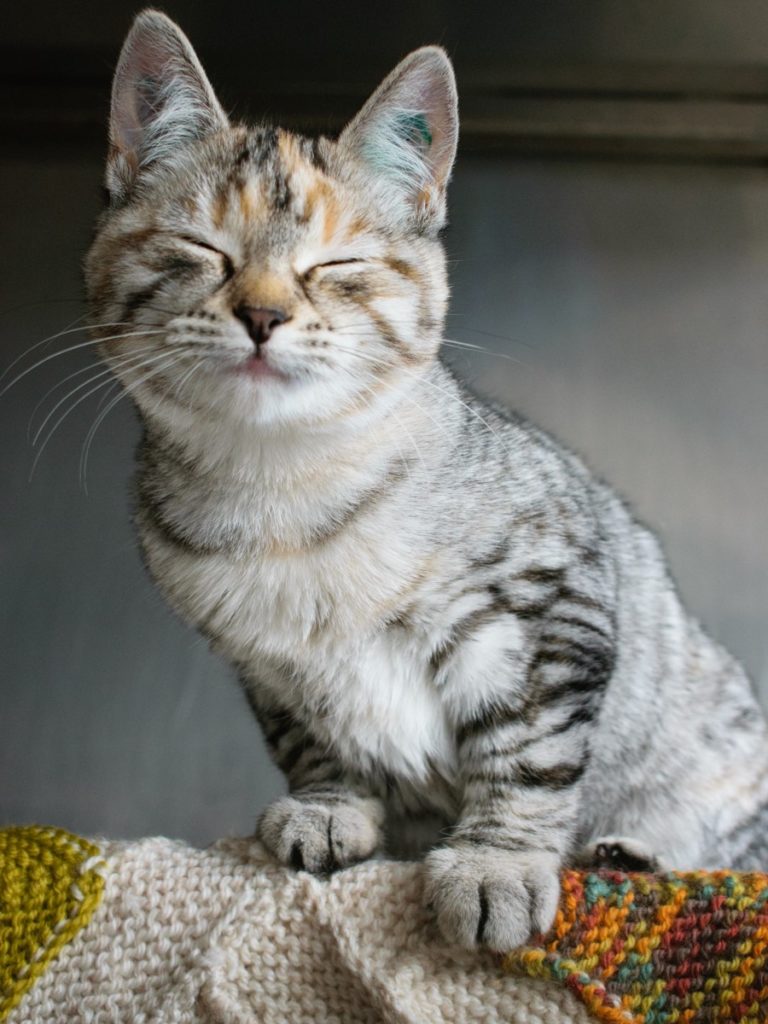
4. Overactivity at night
A common problem faced by most new kitten owners is dealing with the annoyance of audible and uncontrollable zoomies at three in the morning.
Annoying? Yes.
But totally normal? Also yes.
Remember, kittens are full of energy and interest in playing at all hours of the day, but that doesn’t mean that they won’t grow out of it.
If your kitten is really disrupting your sleep with their nocturnal schedule, there are a few things you can do to make life easier:
Adjusting feeding time
To stop your fluffball’s daily 3am burst of energy, try to gradually alter their schedule. Your kitty may be less likely to wake you for a meal during the night or early hours of the morning if you offer smaller, but more frequent meals in the evening.
You could feed them a small meal when you wake up in the morning, a small meal when you arrive home in the evening, and a final meal closer to bed time. If all goes to plan, this should make them less active later on.
Adjusting play time
It’s important to also consider whether the night-time activity is a form of attention-seeking due to a lack of social play earlier in the day.
If your cat is an only fur-baby and all humans in your household work all day, don’t stress. Just offer multiple play sessions in the afternoon or early evening to keep your cat happy and stop them from waking you up hours later.
If you structure social sessions with your puss at around the same time every evening, they should start to anticipate these times and adjust their body clocks around that. Cats are creatures of habit, after all.
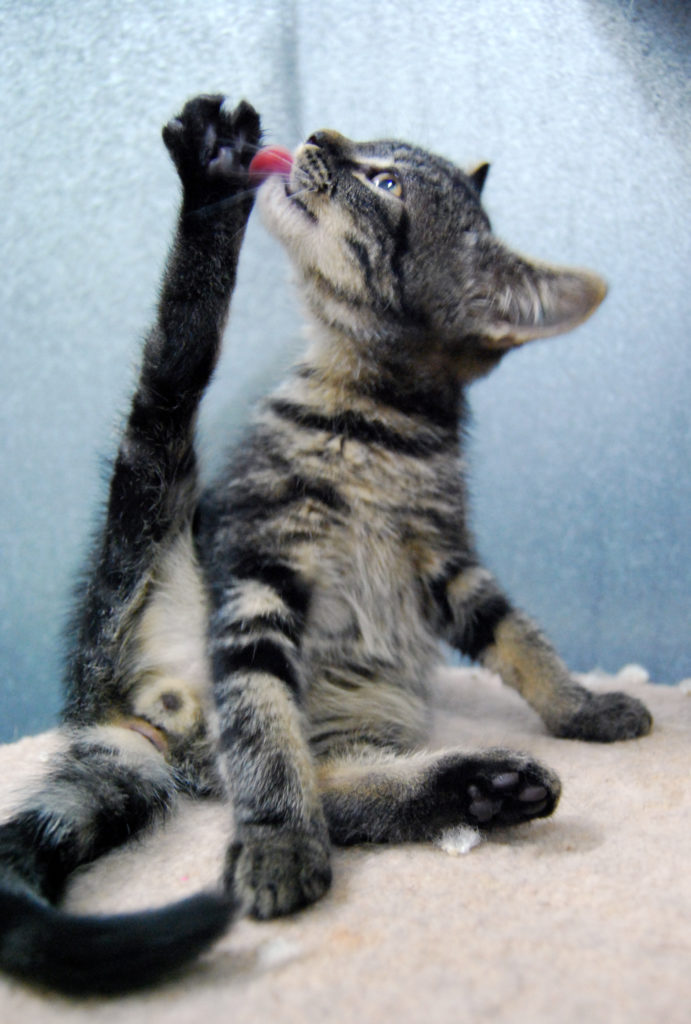
5. Aggression
If your kitten or cat has started acting aggressive, know that it’s more common than you think – and also more easily fixed than you realise! There’s always an underlying reason behind aggression, so in order to treat the problem, it’s important to work out the cause.
First, we recommend consulting your vet to rule out any medical causes. If kitty’s all good medically, then depending on the severity of the aggression, you may wish to ask your vet for a referral to a qualified veterinary behaviourist.
We’ve broken up the most common types of aggressive behaviour with ideas on how to manage it and all the following almost always come down to fear, anxiety or discomfort.
Remember that your cat isn’t aggressive for the sake of it – they’re trying to express an underlying emotional issue.
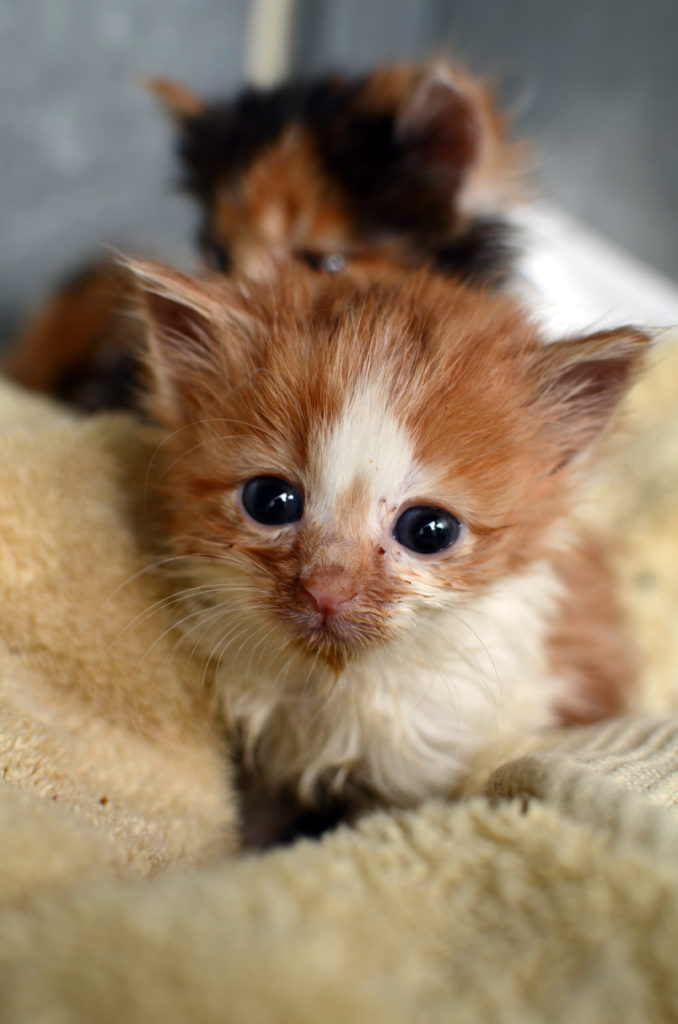
Fear aggression
Cats may display this type of aggression when they feel threatened, especially when cornered. Their ears will usually be turned back with the tail and body lowered, but their teeth may be displayed and they may hiss or growl too. Sometimes they may become fearful very quickly and lash out without any prior warning.
Causes of fear aggression include a lack of socialisation, genetic predisposition or simply a cat’s general personality.
To deal with this:
- In a systematic approach, desensitise your cat by gradually exposing them to the trigger situation where fear was shown. Often it’s another animal or a new environment, but some cats have very specific triggers such as a cat carrier.
- Give your cat a food treat while they are calm during the trigger:
- Rewarding your puss with a treat while they’re calm is a form of ‘counter-conditioning’, where they are taught to associate a fear-evoking situation with a pleasant experience.
- You could also allow them to take refuge in another room (such as their safe haven) until they seem more comfortable with the trigger.
If the above doesn’t work and fear aggression is extreme, your vet may advise the use of medication in combination with behaviour modification help from a specialist.
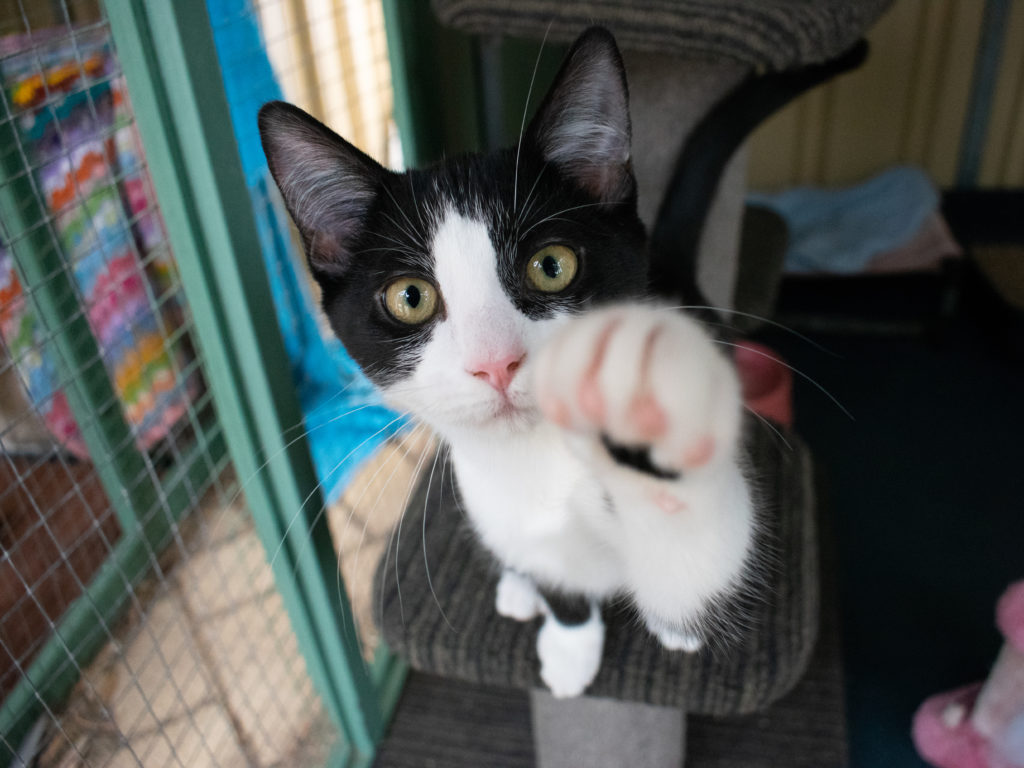
Attacking while being patted
One of the best parts of adopting a new kitten is cuddling and patting them (who wouldn’t love the fluffy?). But the bad news is – some cats don’t tolerate being patted for a long time, and in this case they may suddenly attack their patter and run away.
If this keeps happening with your cat:
- Don’t pat them for a prolonged period.
- Wait for them to initiate patting and then keep it short.
- Look out for any signals kitty sends that they don’t want to be patted anymore and use these as your cue to stop patting.
- If they lash out while you’re patting them, you could try gentle handling by using a back scratcher to pat them instead of your hand. INCLUDE VIDEO OF IT
To train your fur baby out of patting aggression, you can desensitise them. Pat your kitty only for a very short time at first, and then increasingly build up to longer times, while rewarding the cat with food treats for tolerating the patting.
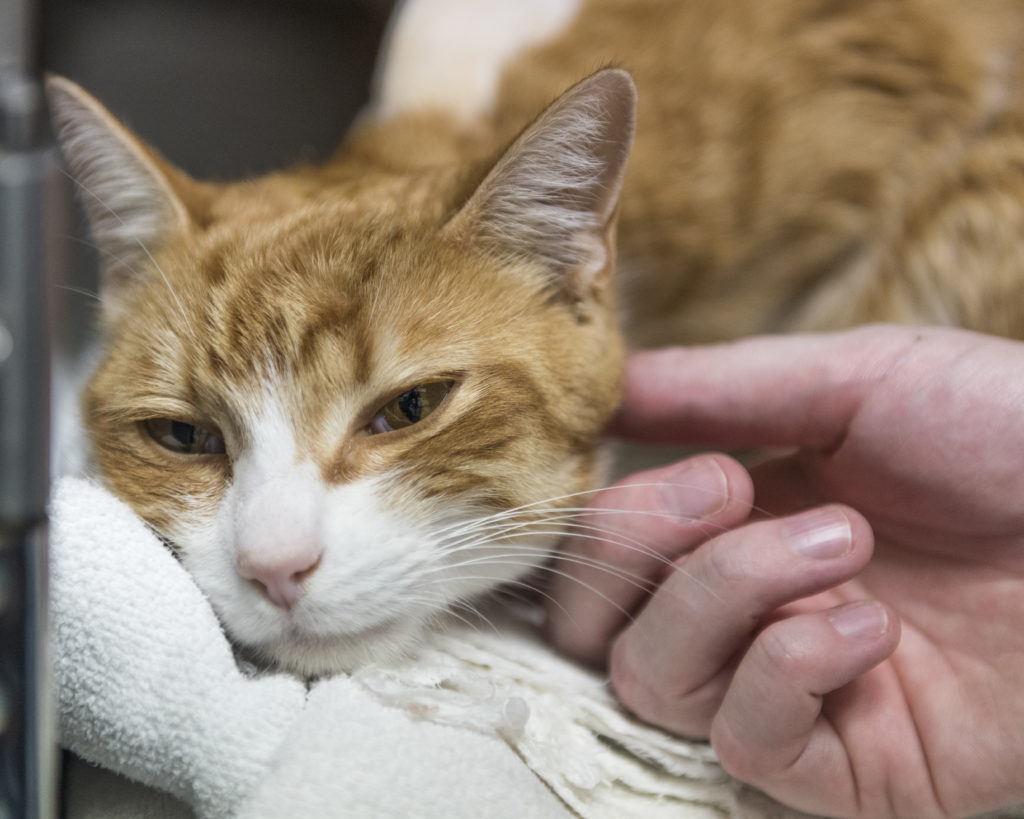
Redirected aggression
This occurs when you try to handle your cat, but they’re already aroused by something unrelated to you. For example, your fur-baby could have seen an unknown cat outside, and then redirected their aggression to you.
To deal with this:
- Be aware of any changes in their behaviour – and simply avoid handling your kitty if they appear aroused by something.
- If there’s a new cat in the neighbourhood they often see outside, you may be able to avoid this by closing the blinds where they usually see this cat.
Or, you could try an approach similar to that recommended above for fear aggression, where you train your cat with systematic desensitisation or counter-conditioning.
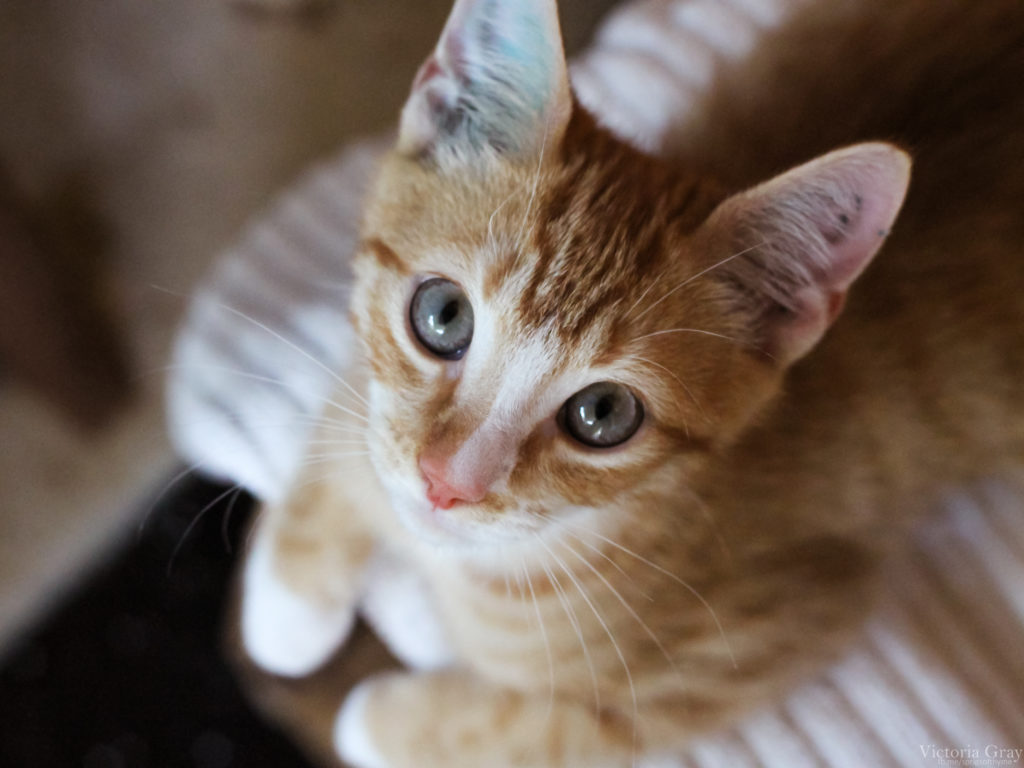
We hope our tips help you and your kitten overcome any problems you may encounter.
Stay tuned for part 4 to this series, where we cover what’s normal and what to look out for when it comes to feline health. Don’t forget to keep us updated on your journey at Facebook or Instagram at @rspcasa and #rspcasa.


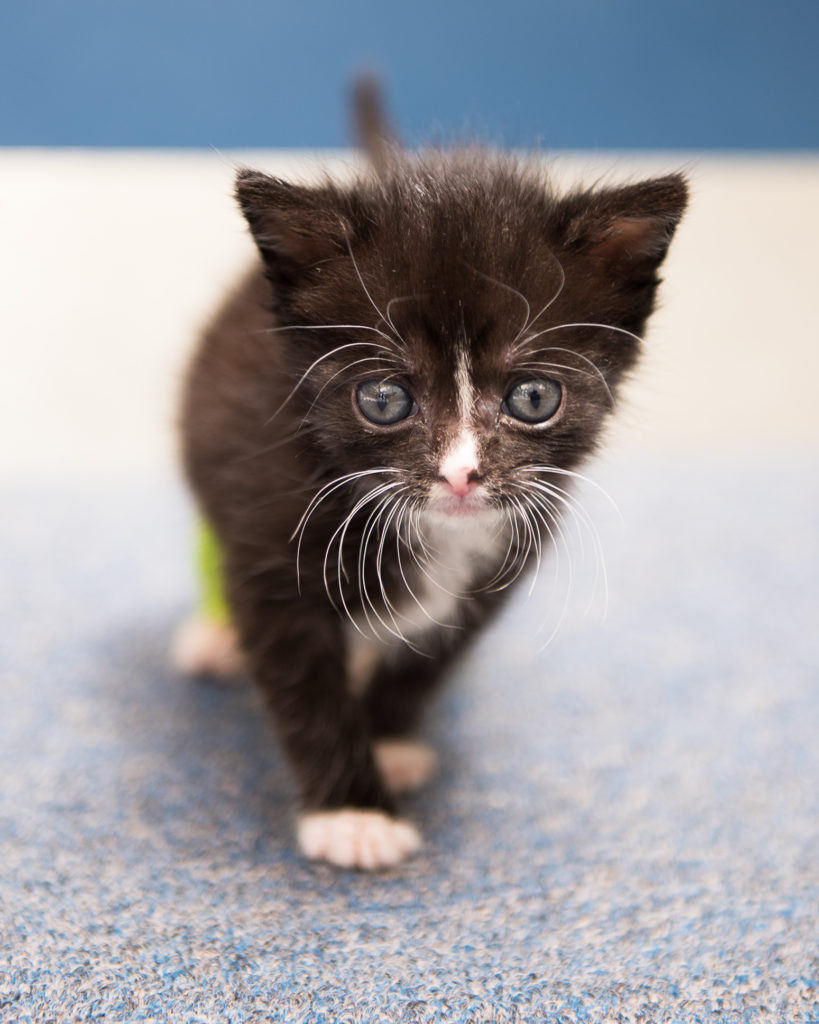


Hi
I’ve got a 3 month old kitten and I’m having issues around the litter tray…
She seems to be weirdly territorial about her litter tray and every time my partner or I clean out her litter tray (just the usual daily scooping) she is always watching and she will use the litter tray directly afterwards. It’s almost as if she is sending an “f you” message!
She’s also occasionally having issues where her feces are runny and she’ll get the end of her tail messy..
Do you have any recommendations?
Hi Michelle, this is a tricky one, for which there could be many possible explanations. If your kitten is having persistent diarrhoea, we’d recommend touching base with your vet just to be safe.
Hi, we have just got 2 x 3 1/2 month old kittens on Thursday.
They are so good, settled in straight away after we bought them home. We feed them 4 small meals a day being 67g each of dry for the day as per the recommended amount on the pack but they are constantly wanting more food all the time. As soon as we go into the kitchen they run in behind meowing & standing at their food bowls in the laundry. We have to shut them in the passage when we eat as they try to get our meals.
They just curl up & lay on the bed until we finish.
Any ideas about how to stop this continually wanting more food. Am I giving them enough to eat? Thankyou
Hi Leah, kittens can have ravenous appetites! They are experiencing a rapid amount of growth, which can cause them to be a little demanding. This behaviour isn’t out of the ordinary and is nothing to worry about.
Hi team
We recently introduced a playful and affectionate 12wk old female kitten into our home where we already have an 18mth old female cat.
For the last few weeks we’ve noticed the kitten decline in playfulness, not interested in her toys (but the older cat is), increase in sleeping and prefers to sit on our shoulders when we are near. She’s turned into Velcro, always stuck to us.
The cat played a little rough early on so feel like maybe the kitten’s been a bit scared or apprehensive, but they do eat meals together and hang out a bit.
It feels like she has little kitty depression. Any advice?
Thanks for reaching out Zoe. If possible, it might be a good idea to create a space for your new kitten to play in which, is away from your older cat. It’ll offer them a bit of respite and you can slowly build her back into playing and interacting with your older cat.